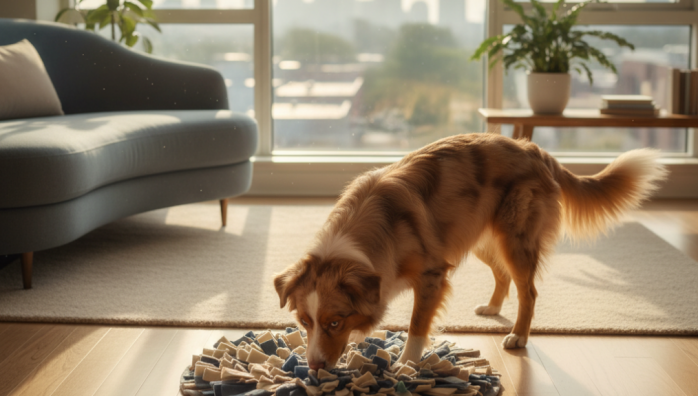Daily Exercise for Apartment Dwelling Active Dogs
by admin in Pet Care Basics 18 - Last Update November 17, 2025

When I first brought my Australian Shepherd, Finn, home to my 700-square-foot apartment, I had a brief moment of what I can only describe as pure panic. I looked at his intelligent, energetic eyes and then at my compact living room, and thought, \'What have I done?\' The conventional wisdom said I needed a big yard, but what I’ve learned over the years is that the size of your home matters far less than the size of your commitment to their needs.
Rethinking the \'daily walk\'
My first mistake was thinking that a couple of brisk 30-minute walks around the block would be enough. Finn would come home, pant for five minutes, and then immediately start looking for trouble. The \'aha\' moment for me was realizing the crucial difference between physical exhaustion and mental fulfillment. A high-energy dog doesn\'t just need to run; they need a job to do. Our walks transformed from a march to a \'sniffari,\' where I let him lead and take in all the smells. It sounds simple, but a 20-minute sensory walk tires him out more effectively than a 40-minute power walk ever did.
My indoor toolkit for a calm and happy dog
You can\'t always get outside, especially with bad weather. Over the years, I\'ve built up an arsenal of indoor activities that have been a lifesaver. It’s not about turning your apartment into a racetrack; it’s about structured, focused engagement.
Brain games are non-negotiable
This is the single most important part of our indoor routine. A tired brain leads to a relaxed dog. Here’s what works for us:
- Puzzle Feeders: I ditched the food bowl years ago. Every single meal is served in a puzzle toy or a snuffle mat. It turns a 30-second meal into a 15-minute problem-solving session.
- \'Find It\' Games: I\'ll have Finn stay in one room while I hide high-value treats around the apartment. It engages his natural scenting abilities and is fantastic for rainy days.
- Trick Training: We spend 10-15 minutes every day learning or polishing tricks. It’s amazing how mentally taxing this is for a dog. It strengthens our bond and gives him a huge confidence boost.
Structured physical play indoors
Indoor exercise needs rules to keep everyone safe and your security deposit intact. I learned quickly that unstructured roughhousing is a recipe for disaster.
- Tug-of-War: We play tug with very clear start and \'drop it\' commands. It’s a great energy burner, but control is key.
- Hallway Fetch: I use soft rubber balls or plush toys to play fetch down our hallway. It prevents him from skidding into walls and is just enough space for a short sprint.
Living with an active dog in a small space has been one of the most rewarding challenges. It forced me to understand his needs on a deeper level. It’s all about being creative and consistent. Of course, every dog has unique needs, and I always recommend chatting with your veterinarian to create an exercise plan that\'s safe and appropriate for your specific pup\'s age and health.










